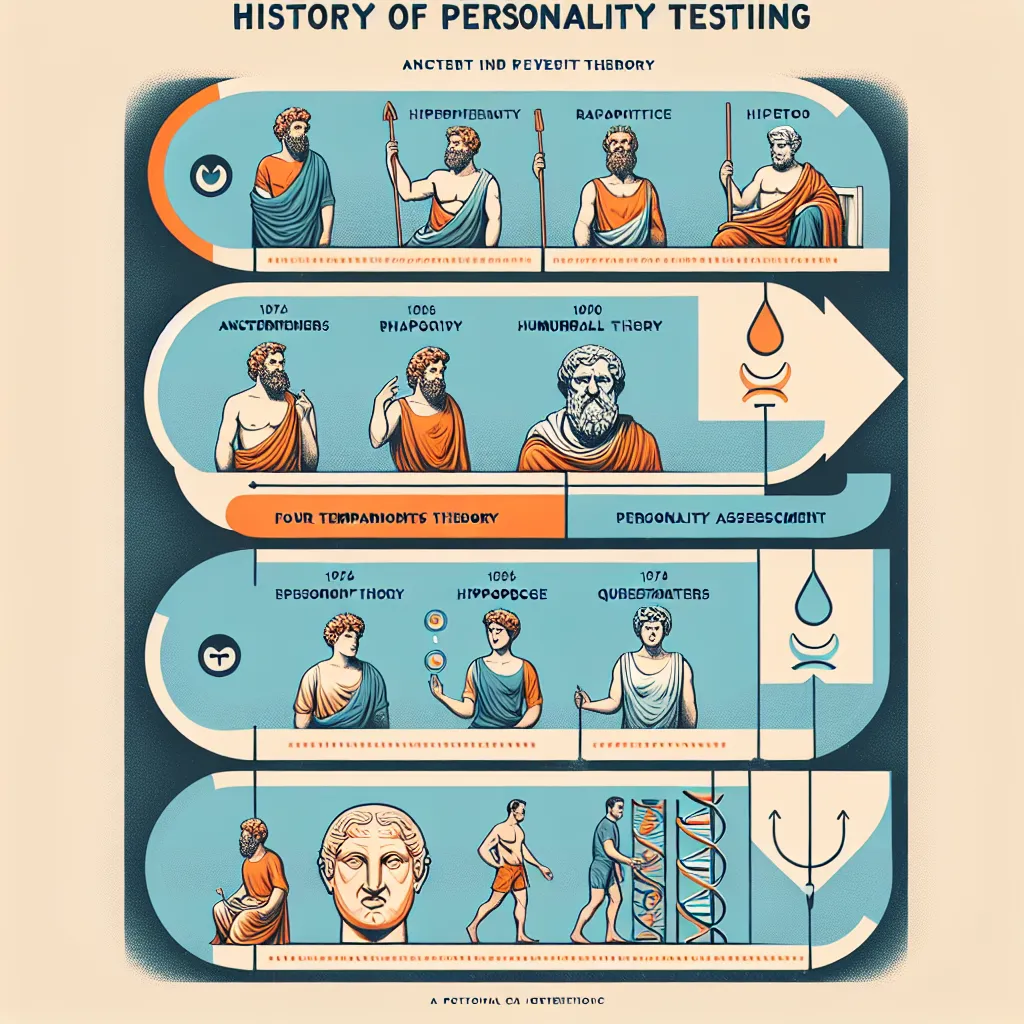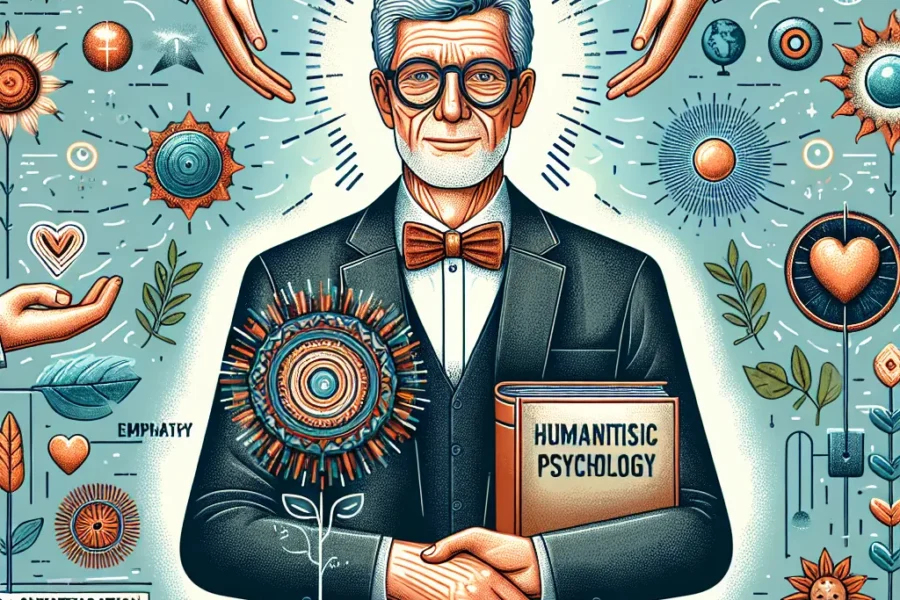Personality Testing: History and Evolution
The quest to understand and quantify human personality has been an enduring pursuit throughout history. Personality testing, as a formalized means of gauging individual temperaments, traits, and behaviors, has undergone considerable evolution. The story of personality testing is one of scientific advancements, theoretical breakthroughs, and incessant debate surrounding its relevance and effectiveness.
The Genesis of Personality Testing
The roots of personality testing can be traced back to Ancient Greek philosophy, where scholars like Hippocrates proposed that human temperaments were based on bodily fluids or “humors.” However, it wasn’t until the late 19th and early 20th centuries that personality testing began to take shape as a scientific discipline.
One of the earliest modern personality assessments was the Woodworth Personal Data Sheet (WPDS), developed during World War I to screen U.S. Army recruits for shell shock (now known as post-traumatic stress disorder). This paper-and-pencil test sought to identify soldiers susceptible to the psychological rigors of warfare, marking one of the first times a standardized methodology was used to assess individual personality traits.
The Advent of Psychometrics
The field of psychometrics, the science of measuring mental capacities and processes, subsequently emerged and greatly influenced the development of personality tests. Psychologist James McKeen Cattell was a pioneer in this area, coining the term “mental test” and laying the groundwork for future personality assessments.
The influence of early psychometricians led to the establishment of the first personality tests intended for the general population, such as the Rorschach Inkblot Test and the Thematic Apperception Test (TAT). These projective tests were predicated on the idea that individuals project their own subconscious thoughts and feelings onto ambiguous stimuli, such as inkblots or pictures, and these responses could be interpreted to reveal their personality.
The Rise of Trait Theory
A significant shift in the realm of personality testing came with the advent of trait theory. Pioneered by psychologists like Raymond Cattell and later refined by others such as Paul Costa and Robert McCrae, trait theory asserts that personality consists of a number of stable qualities or traits that can be measured reliably. Rather than relying on the subjective interpretation of responses, as seen in projective tests, trait theorists developed questionnaires that assessed specific personality characteristics.
The most famous of these trait-based assessments is the Minnesota Multiphasic Personality Inventory (MMPI), first published in 1943. Designed to assist in the diagnosis of mental disorders, the MMPI has been subject to continual revisions and remains a widely used tool in both clinical and non-clinical settings. Another prominent example of trait theory in practice is the Big Five personality traits model, which posits that five major dimensions — openness, conscientiousness, extraversion, agreeableness, and neuroticism (OCEAN) — sufficiently describe human personality.
Advancements in Psychometric Testing
As the 20th century progressed, personality testing benefited from advancements in statistics and computer technology. Factor analysis, a statistical method developed by Charles Spearman and others, allowed psychologists to identify clusters of related personality traits, leading to more nuanced and accurate personality measures.
Computerized testing further revolutionized the field by enabling quicker administration and analysis of personality assessments. With the advent of the internet and digital platforms, personality testing has become more accessible than ever before. Online applications now deliver instant feedback on an array of personality dimensions, expanding the reach and application of these tools.
Contemporary Applications and Controversies
Today, personality tests are employed in a diverse array of contexts, from psychological research and clinical diagnosis to employee selection and career development. High-stakes testing environments, such as job candidate assessments, often incorporate personality measures to predict an individual’s fit for a particular role or organizational culture. Educators and counselors may also utilize personality tests to better understand students’ learning styles and assist in academic and career planning.
Despite their widespread use, personality testing is not without controversy. Critics argue that such tests can be reductive, failing to capture the complexity of human personality and the influence of situational factors. Issues of validity and reliability are a constant source of debate, as is the potential for tests to be biased against certain groups.
Moreover, the rise of data privacy concerns has cast a spotlight on the ethical considerations surrounding the collection and use of personal information gained through personality assessments. The burgeoning field of data analytics and the integration of artificial intelligence in personality testing have added layers of complexity, prompting discussions about the transparency and ethical use of algorithms in assessing human traits.
The Emerging Trends in Personality Assessment
As the field continues to evolve, new trends are shaping the future of personality testing. The integration of gamification elements, for instance, aims to make assessments more engaging and reduce test-taking anxiety. There’s also a growing emphasis on developing culturally sensitive tests that account for diversity and minimize cultural bias.
Researchers are exploring biometric methods, which include the analysis of genetic markers and neuroimaging to augment traditional personality assessments. While still in its infancy, the convergence of biological science and psychological testing promises a more holistic understanding of the factors that contribute to individual personalities.
Conclusion
The history of personality testing is a testament to humanity’s enduring fascination with the self. From its philosophical origins to its present-day scientific rigor, the journey of personality testing reflects our complex relationship with identity and behavior. What started as mere speculation has now become a sophisticated, multifaceted field of inquiry.
As we continue to witness the transformations brought about by technological and methodological innovations, the core objective remains the same: to illuminate the intricacies of the human personality. Even as we venture into new territories with evolving tools and theories, the essence of personality testing — to seek comprehension of ourselves and others — endures as a driving force in psychology’s pursuit of understanding the human condition.



Leave a Comment